このサイトの推奨ブラウザはGoogle Chromeです

令和2年度日本博主催・共催型プロジェクト
日本博を契機とした障害者の文化芸術フェスティバル2020年2月から2022年2月まで
Art Brut CREATION NIppon from 2.2020 to 2.2022
このサイトの推奨ブラウザはGoogle Chromeです

「障害者の文化芸術フェスティバルin関東・甲信ブロック」が2021年10月~12月にかけて、埼玉県秩父市と横瀬町を中心に、サテライト会場として山梨県甲府市および北杜市で開催される。展覧会「アール・ブリュット-日本人と自然-」は、全国巡回の作家に関東・甲信ブロックの作家の作品を加え開催、埼玉県横瀬町では廃校を活用した施設のあしがくぼ笑楽校が会場となる。障害者による舞台芸術公演、バリアフリー演劇、バリアフリー映画祭は、埼玉と山梨それぞれの会場開催・上映と、ライブ配信を並行して行う。
"Art Brut CREATION Nippon in SAITAMA" will be held from October to December 2021 in Chichibu City and Yokoze Town in Saitama with satellite venues in Kofu City and Hokuto City in Yamanashi Prefecture. The exhibition "Art Brut: Humanity and Nature in Japan" will include works by artists from the Kanto and Koshin blocks in addition to those from the national tour. Furthermore, performing arts performances by people with disabilities, barrier-free theater, and barrier-free film festivals will be held and screened at venues in Saitama and Yamanashi, respectively, with simultaneous live-streaming.
開催に先立ち、会場の一つである埼玉県秩父市を訪れ、障害者福祉の地域への関わりから、その目指すところをレポートする。合わせて10月30日(土)に秩父で公演を行う、ハンドルズのワークショップを見学した様子も報告する。
Prior to the event, we will visit one of the venues, Chichibu City in Saitama
Prefecture, and report on the event's objectives from the perspective of the involvement of welfare
for disabled people in the community. We will also report on our visit to the Handles workshop,
taking place in Chichibu on Saturday, October 30.

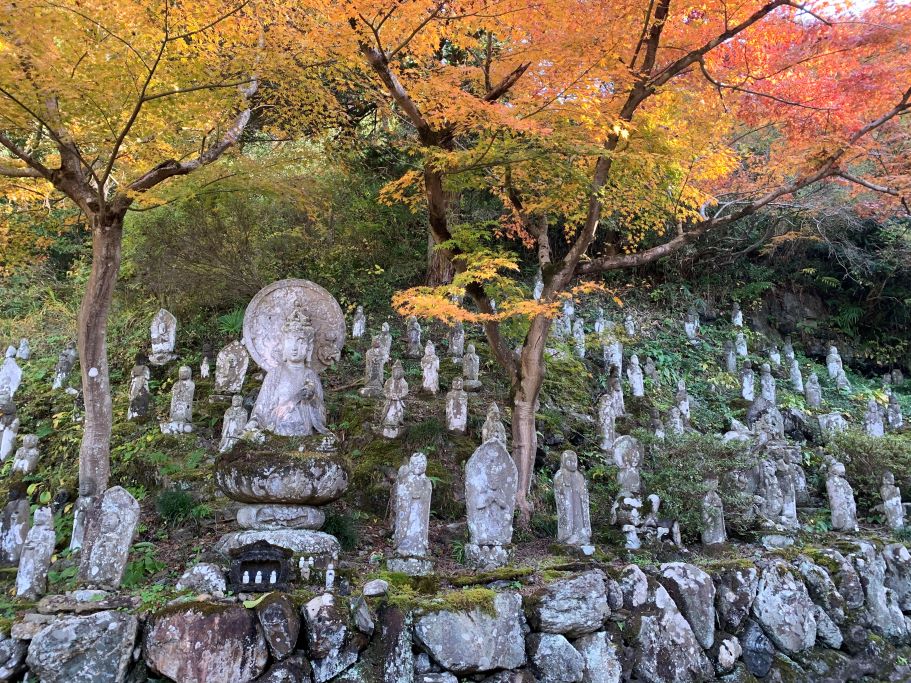
隔絶された山合いの町が、冬の夜祭で盛り上がる
A town in the middle of the mountains, isolated from the rest of the world,
comes alive under a winter night festival.
埼玉県秩父市は、池袋から西武線の特急で1時間20分ほど。埼玉県の北西に位置し、西から東へと流れる荒川に沿って形成された町である。市街は荒川沿いの段丘や丘陵を擁する盆地に広がっており、周囲を秩父山地などの山々に囲まれた立地は、どこか隔絶された山里風情が漂っているようにも感じられる。
Chichibu City, Saitama Prefecture, is about an hour and twenty minutes from Ikebukuro by express
train on the Seibu Line. Located in the northwest of Saitama Prefecture, the city lies along the
Arakawa River, flowing from west to east. The city extends out in a basin with terraces and hills
along the Arakawa River. Surrounded by mountains such as the Chichibu Mountains, the city seems to
have an isolated mountain village atmosphere.
最寄りの西武秩父駅から市街を歩くと、道中には秩父三十四所観音霊場の札所などの寺社が点在しており、信仰の町であることがうかがえる。かつては養蚕と、地場産品の織物「秩父銘仙」で栄え、武蔵と甲州を結ぶ主要道の秩父往還に沿い、多層な建築の養蚕農家や織物問屋の蔵造りの商家が集中する。往時はのこぎり屋根の織物工場が集積しており、町の多くの人々がこれらの産業に従事していたという。
When strolling around the city from the nearest Seibu Chichibu Station, one can see that it is a
town of worship, with temples and shrines such as the Chichibu 34 Kannon Sacred Grounds scattered
along the way. Once prospered with sericulture and the local textile "Chichibu Meisen," along the
main road connecting Musashi and Koshu is centered with sericulture farmers with multi-layered
architecture and brewery merchants of textile wholesalers. There was a concentration of weaving
factories with sawtooth roofs in the past, and many of the town's people were engaged in such
industries.
カフェや旅館、病院といったレトロな洋館が並び、当時の賑わいを伝える繁華街だった番場通りの先には、市街随一の見どころである秩父神社が鎮座する。2000年前に創建された古社で、徳川家康が再建した社殿は左甚五郎による龍や虎のきらびやかな彫刻で彩られている。関東で名の知れた祭事「秩父夜祭」は、この秩父神社の例祭。12月初旬に行われる冬の祭りで、市街を艶やかな装飾の屋台と笠鉾が曳き回され、厳寒の夜空を華やかに彩る花火でクライマックスを迎える。この祭事には市民はもちろん、秩父を故郷とする人々が集って盛り上げるなど、当地に生まれ育った住民たちにとってかけがえのない行事である。
At the end of Banba-dori, a street lined with retro Western-style cafes, inns, and
hospitals
that was once a bustling shopping district, lies the Chichibu Shrine, one of the city's most popular
attractions. Two thousand years old, the shrine was rebuilt by Ieyasu Tokugawa and decorated with
glittering carvings of dragons and tigers by Jingoro Hidari. The “Chichibu Night Festival,” one of
the
most famous festivals in the Kanto region, is a winter festival held in early December, culminates
in a
spectacular fireworks display that lights up the cold night sky. The festival is an irreplaceable
event
for the people born and raised in Chichibu, who call Chichibu home and gather to celebrate the
festival.
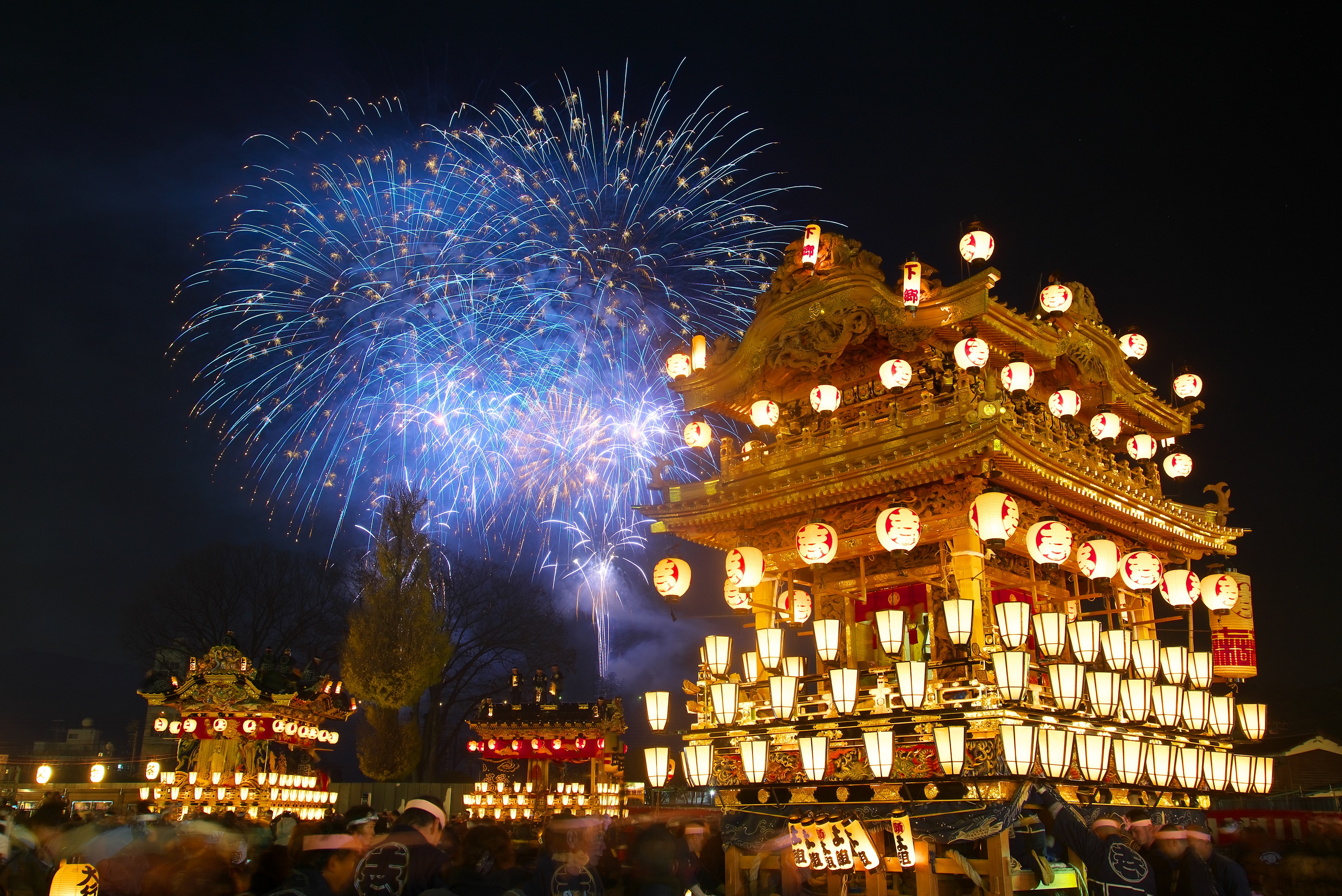
秩父はこの夜祭を代表に、年間で330以上の祭事が行われる祭礼文化の地である。それぞれの祭へは町ぐるみで参加協力しており、当地の地域社会の象徴にもなっている。秩父は土地柄、昔から地域内の人と人との繋がりが濃密で、互助組織の隣組が現在も健在。祭礼文化にその地域性が表れている。
Chichibu is a land of festivals and culture, with more than 330 festivals held
throughout the year, including this night festival. The whole town participates and collaborates in
each of these festivals, which symbolizes the local community. Chichibu has always been a place
where people are closely connected to each other, and the mutual aid organization Tonari Gumi is
still active today. The local culture is reflected in the festival.
関東・甲信ブロックの埼玉会場の運営を担う社会福祉法人清心会は、創立以来40年近くにわたり、この秩父を本拠に活動を行っている。秩父地域の障害者福祉を長く担ってきた法人で、「古くからの秩父の地域性を大切にし、地域と深い繋がりを持ちながら事業を行なっているのが特徴です」と副理事長の岡部浩之さんは話す。
The social welfare corporation Seishinkai, which manages the Saitama venue of the
Kanto/Koshin block, has been based in Chichibu for nearly 40 years since its establishment. The
Seishinkai has long been responsible for the welfare of disabled people in the Chichibu area. Its
main characteristic is "placing value placed in the local character of Chichibu from long ago and
conducting business while maintaining deep ties with the community," says Hiroyuki Okabe, vice
president of the Seishinkai.
清心会では、障害者支援施設やグループホームといった居住系支援のほか、利用者が地域で自立をしていけることを念頭に置いた活動系支援も積極的に行っており、岡部さんのご案内でその一つ、さやかワークセンターの「のぞみ工房ぽっぽ横瀬本店」を訪問した。芝桜の名所である羊山公園の山麓そばにあり、スーパーだった店舗を活用した施設では、パンの製造販売と味噌など地産品の加工販売を行っている。
In addition to residential support such as assistance facilities and group homes for
disabled people, Seishinkai also actively offers support activities to help users become independent
in the community. Located near the foot of Yotsuyama Park, famous for its mossy cherry blossoms, the
facility uses a former supermarket to manufacture and sell bread and process and sell local products
such as miso.
消えゆく地域の食文化を、継承して伝承する
Inheriting and succession of the vanishing local food culture
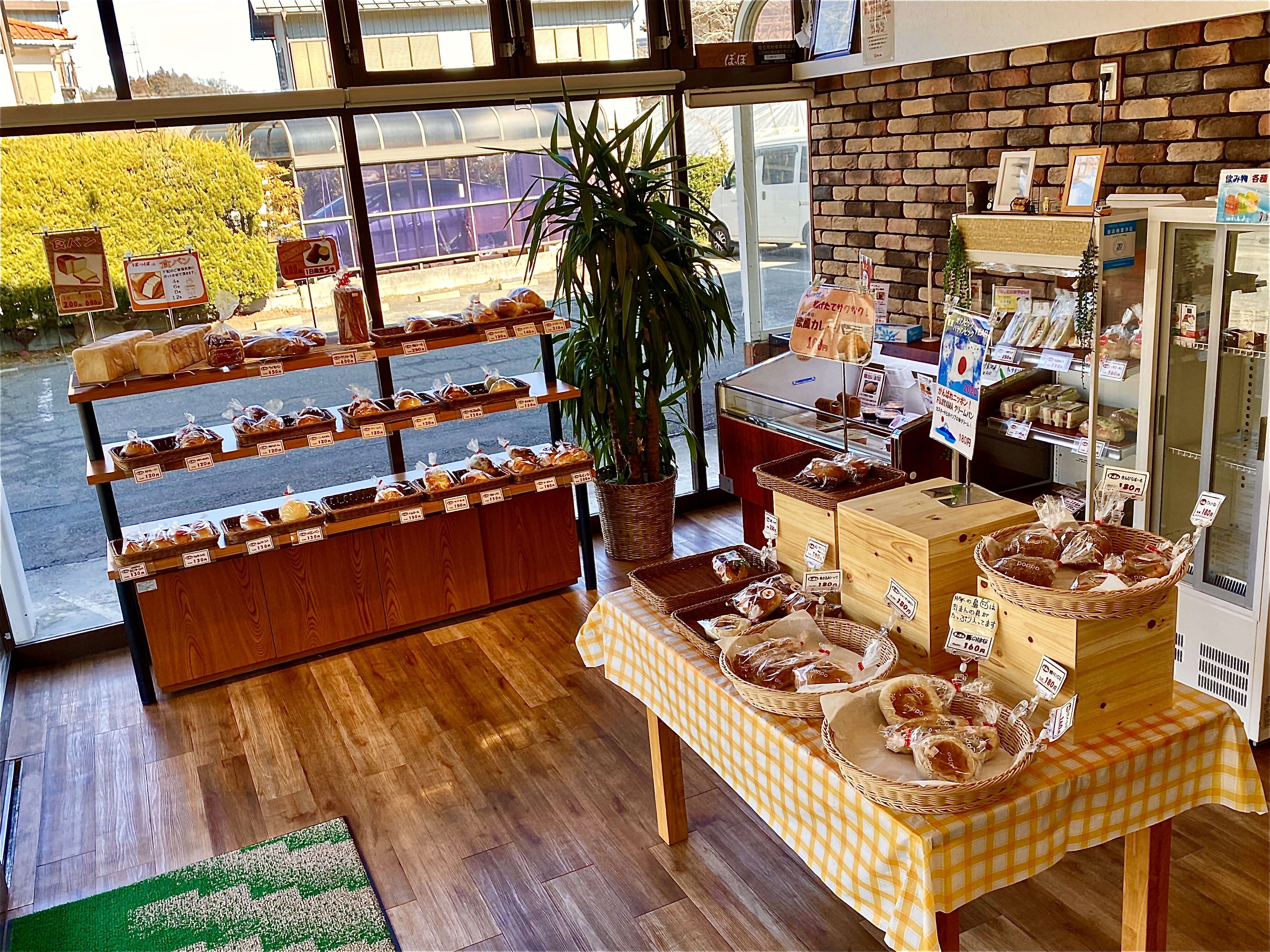
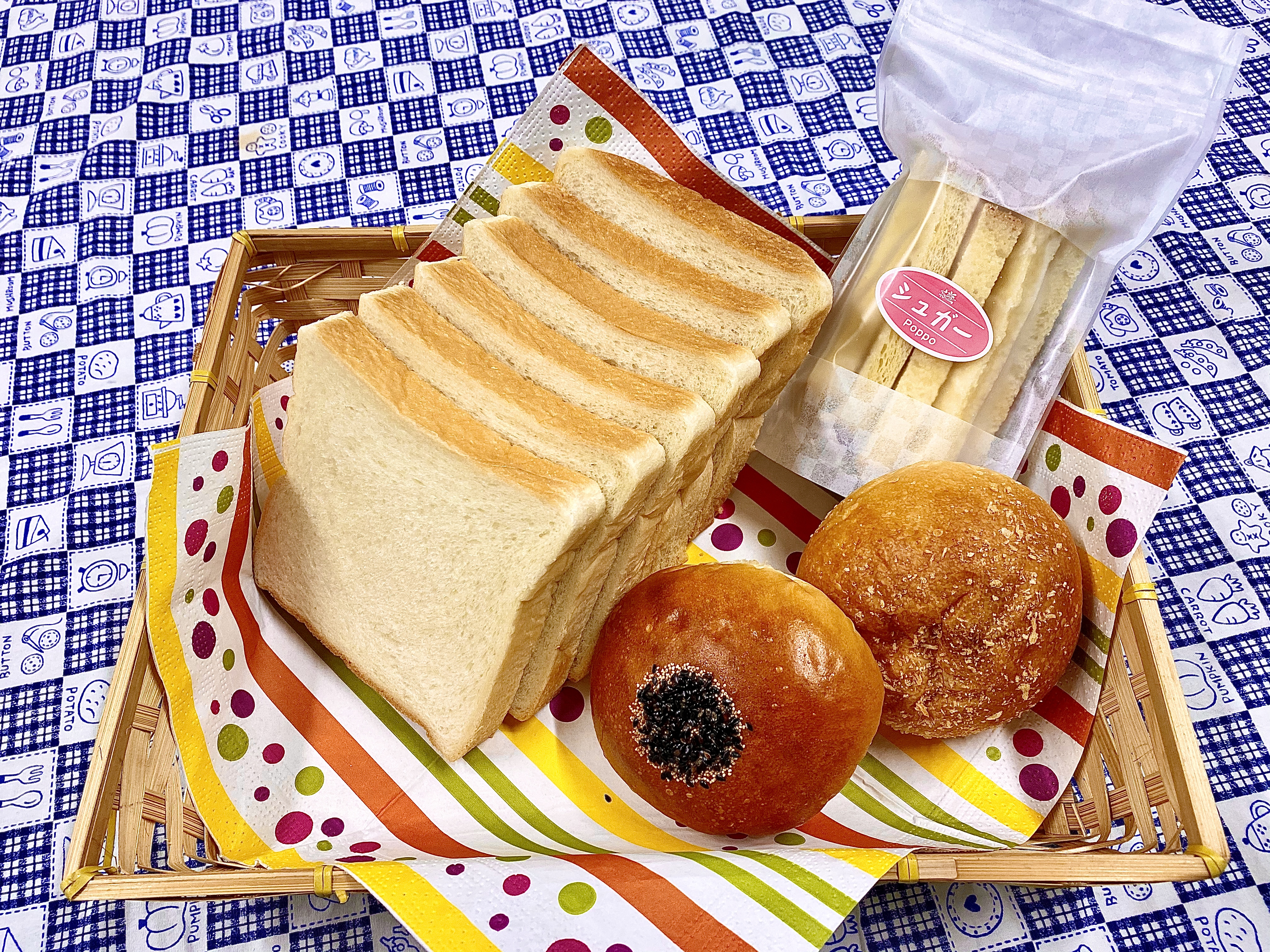
ぽっぽでは商品の製造から販売まで、一貫して利用者が行なっているのが特徴だ。店舗を拝見すると、棚には様々な菓子パンや総菜パンなどが並んでいるのが目に入ってくる。秩父らしさと季節の特色を出しており、ハロウィンをテーマにした商品や装飾が華やか。秩父の産品の中では、「借金なし味噌」に名前から興味をひかれる。秩父伝来の大豆の銘柄だそうで、大豆がとれた分だけ味噌が売れ借金を返せることが所以なのだとか。
One of the features of Poppo is that all processes from production to sales are carried
out by the users. Upon visiting the store, one sees that the shelves are lined with a variety of
confectionary bread and side dishes. The store is decorated with Halloween-themed products and
decorations to give it a Chichibu aura and seasonal flair. Among the Chichibu products, the name of
the "debt-free miso" caught my interest. It is said to be a brand of Chichibu's traditional
soybeans, and the reason is that the more soybeans are harvested, the more miso is sold to pay off
the debt.
この味噌、実は作り手がいなくなり消滅しそうだったのを、清心会で受け継いだそうで、「地域の伝統産業や食文化を次世代に継承して、地域社会へ貢献したい」と岡部さん。さらにこの味噌を使った加工品を考案、付加価値も加えて発展させていくことも念頭においている。当フェスティバルのプロジェクトの一つ「農×福×食」では、料理研究家・服部幸應氏監修により、秩父の農作業時の伝統食「小昼飯(こじゅうはん)」をアレンジした商品とレシピを開発する。生産と販売はぽっぽの利用者が関わる予定で、農業と福祉と食文化の理想的な三者連携が達成される上に、利用者と地域との密着にも繋がる施策といえる。
Okabe says, "I want to contribute to the local community by passing on the region's
traditional industry and food culture to the next generation." He is also considering the
development of processed products using this miso and adding value to them. One of the festival's
projects, "Agriculture (Noh) x Welfare (Fuku) x Food (Shoku)," is to develop products and recipes
based on "Kojuhan," a traditional Chichibu food used during farming, under the supervision of
cookery researcher Yukio Hattori. The users of Poppo will be involved in the production and sales of
the products. It is a measure that will achieve the ideal tripartite cooperation between
agriculture, welfare, and food culture and bring the users closer to the community.
こうした取組の背景には、秩父は根付いた産業が少ないうえに立地する企業も限られ、雇用の場として清心会が重要な役割を持っていることもある。清心会では、産業の継承が商業や地場産業の発展に繋がり、雇用の場の創造になることも思い描いているそうで、古くからこの地に根付いた清心会らしい、地域と人を大切にし、さらに共生社会の形成も念頭に置いた取組だろう。
Behind such efforts is that Chichibu has few established industries and only a limited
number of companies, and Seishinkai plays an important role as a place of employment. The Seishinkai
envisions that the succession of industries will lead to the development of commerce and local
industries and the creation of employment opportunities.
清心会の「広報部長」は、地域を結ぶ「アンバサダー」
Seishinkai's "Public Relations Manager" is the "ambassador" connecting the
community
ぽっぽでは、こちらで働いている清心会の利用者・堀口旬一朗さんにお目にかかった。ちょっとふくよかな体形に白衣姿、にこやかな表情で普段の生活を楽しげに話していただく様子に、こちらも和んで話が弾んでいく。ぽっぽでの職歴は20年あまり、実家が秩父では知られた中華料理店で、店で働く家族の姿が身近だったこともあり、お客さんに寄り添っての接客が好評と、周囲の評価が高い。「この店では、彼がお客さんに対して一番顔が広いですね」と岡部さんも認めているほどだ。
At Poppo, we met Shunichiro Horiguchi, a Seishinkai user who works here. He is a little
bit plump and wears a white coat, with a smiling face as he happily talks about his daily life made
us feel relaxed and excited to talk with him. He has been working at Poppo for more than 20 years.
His family is well known in Chichibu, and he was familiar with the family working at the restaurant.
Okabe admits, "In this restaurant, he is the most renowned with the customers.
接客のみならず、店では若い職員や新人の世話やフォローをしたり、利用者の親睦組織のまとめ役にもなったり。さらに近隣の横瀬小学校の、下校時間帯の交通安全指導員も務めるなど、ぽっぽの中心として行動し対外へも積極的に出ている様子である。そんな人前力と発信力を生かして、旬一朗さんは清心会を代表して様々なところへ出かけては、自身の言葉や行動で発信を行なっている。岡部さんいわく、旬一朗さんは清心会の広報部長で、「アンバサダー」なのだとか。
Not only does he serve customers, but he also takes care of and follows up with young
staff and newcomers at the store, and helps organize a friendship group of users. He also serves as
a traffic safety instructor at the nearby Yokose Elementary School during school dismissal hours,
acting as the center of Poppo and actively participating in external activities. Utilizing his
public and communication skills, Shunichiro goes to various places as a representative of Seishinkai
to communicate through his words and actions. According to Okabe, Shunichiro is the head of
Seishinkai's public relations department and the "ambassador" for the organization.

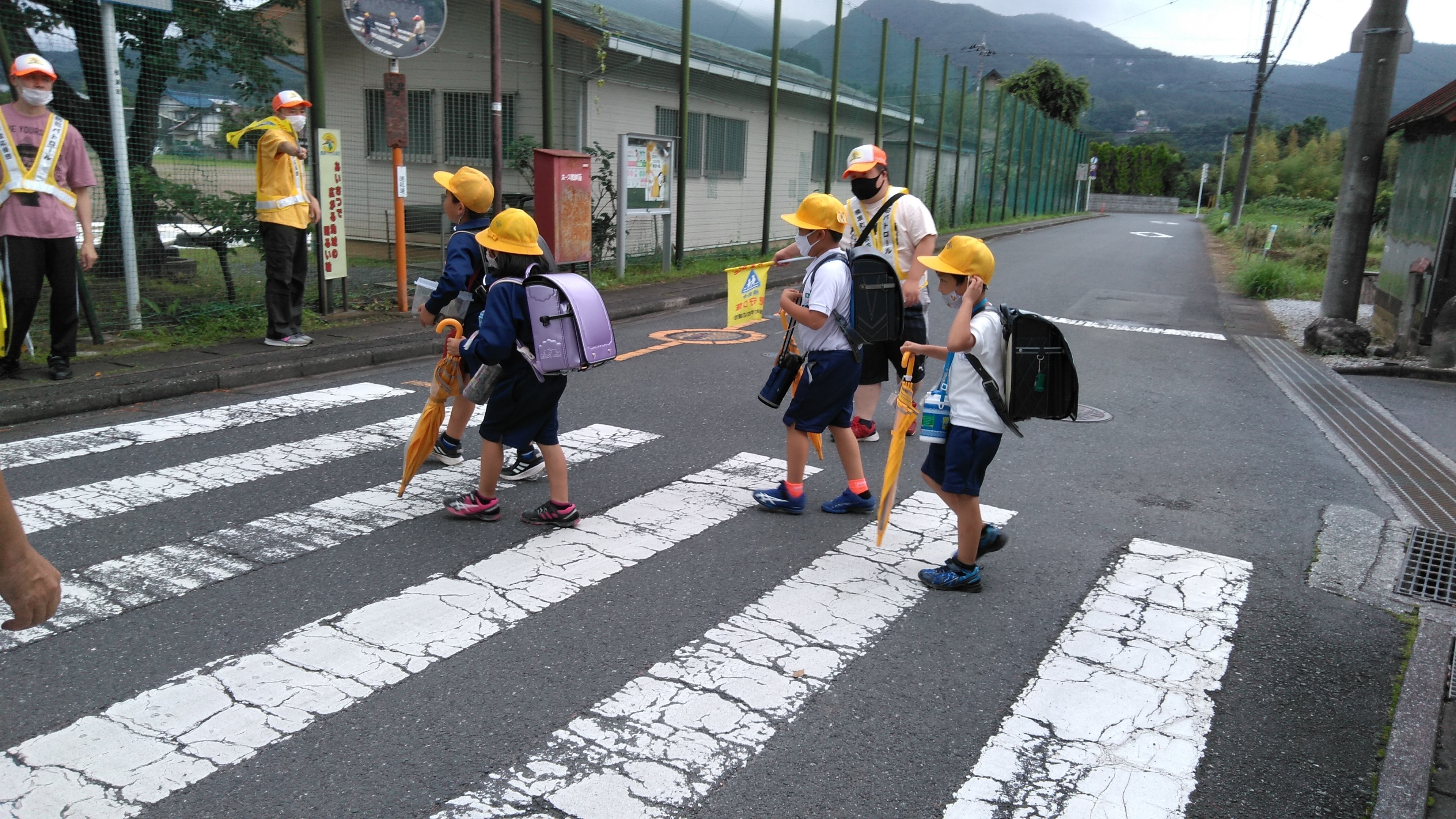
秩父でのハンドルズ凱旋公演を、楽しみに
Looking forward to the triumphant return of the Handles in Chichibu,
旬一朗さんの対外的な発信活動は、大きく2つのジャンルがある。その1つは、パフォーマーとしての発信。ダンサー、振付家でありダンスカンパニー「コンドルズ」主宰の近藤良平さんが演出・振付する障害者ダンスチーム「ハンドルズ」に、12年前の結成当初から参加しており、公演では持ち前のユニークなアクションで全力発信している。
Shunichiro's external activities are divided into two main genres. One of them is as a
performer. He has been a member of "Handles," a dance team for disabled people directed and
choreographed by Ryohei Kondo, a dancer, choreographer, and leader of the dance company "Condors,"
since its inception 12 years ago.
埼玉県では、2009年から障害のある方の創り出す作品、表現の魅力を多くの方に知ってもらい、心のバリアフリー、多様であることを認め合う豊かな共生社会の実現に向け取り組んでいる。「ハンドルズ」は12年間継続して、今年度も新たな公演に向けて活発に活動している埼玉県の障害者アートに関する取組みのシンボルとなっている。
Since 2009, Saitama Prefecture has been working to promote the allure of works and
expressions created by disabled people and to realize a barrier-free society and an affluent
symbiotic society that recognizes diversity. "Handles," over 12 years, is a symbol of Saitama
Prefecture's efforts in the field of art for disabled people and actively working on new
performances this year.
旬一朗さんはチームでも中心的存在で、持ち前の人を惹きつける力で、メンバーの取りまとめをはじめ、「もっと自分を出して、自分のオリジナルを出して」などと、パフォーマンスを盛り上げたりもしている。チームには車椅子など、様々な障害を持つメンバーが所属しており、「舞台では何よりもメンバーを大切にしたい」という旬一朗さんの言葉に、仲間を思う気持ちも伝わってくる。
Shunichiro is one of the main members of the team, and with his natural ability to
attract people, he is able to organize the members and even enhance performances by telling them to
"show more of oneself, to show one's originality". The team includes members with various
disabilities, including wheelchairs, and Shunichiro's words, "I want to take care of the members
more than anything else on stage," is a testament to his love for his friends.
関東・甲信ブロック実施するが「舞台芸術公演」でも、10月30日(土)に秩父宮記念市民会館で公演を行う予定で、旬一朗さんをはじめ秩父出身のメンバー4人が舞台に立つ。地元開催のため知り合いが多く来場するそうで、「みんなから、パワーがもらえるのが楽しみ」と旬一朗さんは嬉しそうだ。
The "Performing Arts Performance," which will be held in the Kanto and Koshin regions,
will be held at the Prince Chichibu Memorial Civic Hall on Saturday, October 30, and Shunichiro and
four other members from Chichibu will take the stage. Since the event is held in their hometown,
many of their acquaintances will be present, and Shunichiro happily says, "I'm looking forward to
getting powerful energy from everyone."
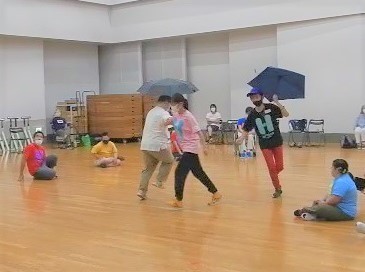
後日、11月公演に向けたハンドルズのワークショップを見学に、埼玉県さいたま市の彩の国さいたま芸術劇場を訪れた。今年のメンバーは17名で、関東・甲信ブロックの秩父公演と11月27日(土)・28日(日)のこの劇場での第10回公演に向けて、稽古を続けている。メンバーはグループに分かれて音や動きで表現したり、題に合わせて一人ずつ動きを見せたりと、和気あいあいとした雰囲気の中での思い思いの表現が印象的だ。
Later, we visited Sainokuni Saitama Arts Theatre in Saitama City, Saitama Prefecture,
to observe the Handles workshop for their November performance. There are 17 members this year, and
they are continuing their rehearsals for the Chichibu performance in the Kanto/Koshin block and the
10th performance at this theater on November 27 (Sat) and 28 (Sun). The members were divided into
groups and expressed themselves through sound and movement or showed their individual moves
according to the theme, and the atmosphere was friendly, and the expression of their thoughts was
impressive.
メンバーの自由な動きについて、「パフォーマンスは個性が集まっての集合体で、それが1つになって全体が形作られていくのです」と近藤良平さんは話す。各々の個性に合わせてテーマをあてはめていくそうで、思いから沸き立ってくる動きを広げて、繋げて、開放させて、そこから全体像を作り上げて観る側へ伝えていくのが、近藤さんのハンドルズに対する演出の考え方のようである。
Regarding the free movement of the members, Ryohei Kondo said, "A performance is a
collection of personalities, which come together to form a whole. Kondo's approach to staging the
Handles is to expand, connect, and open up the movements that arise from the thoughts and feelings
of each member and then create a whole image to convey to the audience.
そんな、障害者ダンスチームならではの表現力について近藤さんに伺ったところ、「素のまま、純粋さ、嘘がないこと」。表現を行う際には、上手にとか伝えやすくとか、演ずる意識が先に立つことがあるが、彼らの装飾のない無垢でストレートな発信は、観る者にまっすぐ伝わってくるものがある。
When I asked Kondo about the unique, expressive energy of a dance team for the
disabled, he said, "It's all about being sincere, pure, and without any lies. When expressing
oneself, there are times when the consciousness to perform well or communicate easily comes first,
but the innocent and straightforward transmissions of these dancers, without any embellishment, are
directly transmitted to the audience.
傘を手に、順に雨の中を歩くという題のワークでは、まさにそれを実感した。静々と歩む、飛びながらはしゃぐ、ゆらゆらと踊る、風雨に翻弄される。傘に入れてもらう。動きから様々な背景も見え、雨の強さや向き、「散歩」「通所」「帰宅」といった場面、「一人」「家族」「仲間」など共にいる人までも。一本の傘が彼らの表現を引き出し、それを近藤さんが導いて広げることで、周囲に風景が生まれてくる。雨はそれぞれにどのように映っていて、いかなる情景の中にいるのか、観ているこちらもイマジネーションが膨らんでいくのだ。
That is precisely how I felt with the work titled "Walking in the rain in order, with
an umbrella in hand." Walking quietly, flying and frolicking, dancing and swaying, and being tossed
about by the wind and rain. One is covered under an umbrella. From their movements, we could see
various backgrounds, the strength, and direction of the rain, scenes such as "walking," "going to
the hospital," and "going home," and even the people they were with, such as "one person," "family,"
and "friends. A single umbrella brings out their expressions, and as Kondo guides, expands, and
creates a landscape around them. How the rain is reflected towards each, and the type of scene, will
broaden the audience's imagination.
深く刺さる言葉に裏付けられた、発信力とは
The power of communication backed by deeply penetrating words
そして旬一朗さんのもう1つの発信活動が、講演活動だ。東京大学で行われた「福祉を身近なものに。障害を身近なものに」と題した市民後見人養成講座では、ぽっぽでの活動など日々の生活の様子や生き方への思いを、自らの言葉で語った。持ち前の話の上手さ、伝わりやすさ、メッセージ性が評価され、これをきっかけに東京、北海道など、講演のオファーが増えていった。
Another of Shunichiro's activities is to give lectures. At the University of Tokyo, he
gave a lecture titled "Making Welfare and Disabilities More Customary," directed towards citizen
guardians. He spoke in his own words about his daily life, including activities at Poppo, and his
thoughts on how to live. His natural ability to speak well, convey messages easily, and the message
itself were highly evaluated, and this led to an increase in the number of offers to give lectures
in Tokyo, Hokkaido, and other places.
岡部さんによると、旬一朗さんの言葉には時折、深く刺さるものがあるという。これらは、旬一朗さんが清心会の職員やぽっぽの仲間やお客、ハンドルズのメンバー、家族といった、周囲の人たちに恵まれており、彼らを大切にしている気持ちから出てくる言葉でもある。講演での折々で発せられるそんな言葉は心に響くメッセージとなり、語り掛けに耳を傾け、引き込まれ、納得や感心させられる。
According to Okabe, there are times when Shunichiro's words sting deeply. These words
come from the fact that Shunichiro is blessed with people around him, such as the staff of
Seishinkai, his friends and customers at Poppo, the members of Handles, and his family, and he
values them very much. His words, which are spoken from time to time in his lectures, become a
message that resonates in our hearts, and we are drawn in, convinced, and impressed by what he
says.
利用者の発信力を、どのように生かしていくかが課題
The challenge is how to make the most of the users' ability to communicate
旬一朗さんの2つの発信活動は、「彼の人生を変えたもの」、と岡部さん。彼の発信力、人を引き寄せ結び付ける力により、共に行動した岡部さんもいろいろな出会いの縁に恵まれたそうだ。このように清心会としては、利用者の日常からパフォーマンスやアートに繋がる要素を見出して発信に繋げていきたいが、施設としては「協調」と「自由」のバランスをとりつつ導いていくことが、なかなか難しいという。仕事や集団生活の中では規律に従う必要もあるが、自由にできる場では能力を全面開放させてあげたい。旬一朗さんの発信力もぽっぽや施設での生活の中に加え、ハンドルズというパフォーマンスできる場があったからこそ、露見したものといえる。
Okabe said that Shunichiro's two activities "changed his life." Shunichiro's ability to
communicate, attract and connect with people has blessed Okabe, who has worked with him, with
various
opportunities to meet people. As you can see, Seishinkai would like to find elements of performance
and
art in the daily lives of its users and transmit them to the public. Still, as a facility, it is
difficult to lead them while maintaining a balance between "cooperation" and "freedom". There is a
need
to follow discipline in work and group life, but in a place where they can be free, I want to let
them
fully open up their abilities. It can be said that Shunichiro's ability to communicate was also
revealed
as he had the opportunity to perform in Handles, on top of his life at Poppo and the
facility.
とはいえ利用者のこうした能力は、社会福祉法人こそ見出せるものでもある。利用者の日常からアートやパフォーマンスに気づき、導いて発信することで、結果として利用者本人、法人およびその職員、秩父という地域の三者に還元できるのが理想と岡部さんは考える。
However, such abilities of users can be found only at social welfare corporations. Okabe believes
that
the ideal situation would be for the users to become aware of art and performance in their daily
lives,
and by guiding and disseminating this information, they would be able to give back to the three
parties
involved: the users themselves, the corporation and its staff, and the community of Chichibu.
受け身の福祉から能動的な福祉で、地域へ還元する
From passive welfare to active welfare, giving back to the community
狭い町である秩父では、地域で生きていくことが結果として、助け合いや地域貢献へ繋がっていく。清心会はそんな秩父の土地柄に則って、社会福祉法人の範疇に限らず秩父の商業、産業、教育など、様々な分野と連携していきたいと考えている。「自らでは賄えないことは他の事業者の力を頼ることも、地域の活性化の一環」と岡部さん。こうしたやり取りを積極的に行って、受け身ではなく能動的・積極的な福祉を秩父の地で展開、地域への還元を続けていくことが理想と話す。
In the small town of Chichibu, living in the community leads to helping each other and
contributing to the community. Seishinkai, in keeping with the local character of Chichibu, would
like to collaborate with various fields such as commerce, industry, and education in Chichibu, not
limited to the category of social welfare corporations. Okabe says, "Part of revitalizing the
community is to rely on other businesses to help us with things we cannot do ourselves." His ideal
is to actively engage in this kind of exchange to develop active and proactive welfare in Chichibu
and continue giving back to the community.
旬一朗さんは清心会の、そして秩父の広報として、ハンドルズでの活動も含めて様々なメッセージを発信している。ちなみに旬一朗さんの夢は「ヘルパーの資格を取ること」だったが、資格を取得して夢を実現した現在は、清心会のグループホームで夕方1時間ほど手伝いをしている。広報活動に加え、利用者による助け合いと地域への還元という清心会が目指す理想を、「広報」である旬一朗さん自らが成し遂げているのである。
As a public relations officer for Seishinkai and Chichibu, Shunichiro has been
transmitting various messages, including his activities in Handles. Incidentally, Shunichiro's dream
was to become a "certified helper." Now that he has achieved his dream, he helps out at Seishinkai's
group home for about an hour in the evening. In addition to his public relations activities,
Shunichiro himself, as the "public relations" person, is achieving the ideal that Seishinkai strives
for, which is for users to help each other and give back to the community.